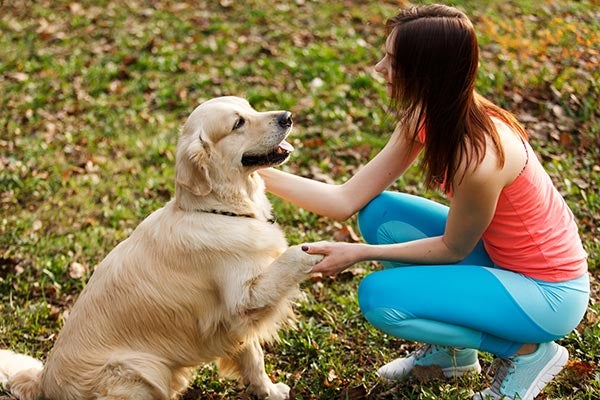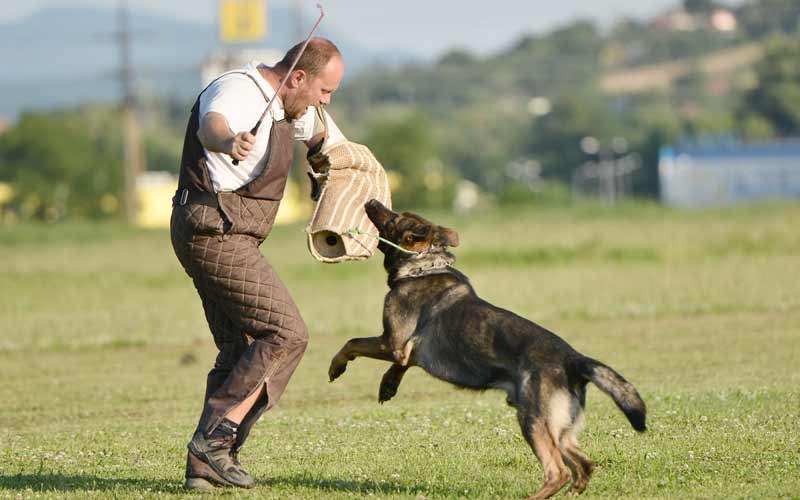Newbie's Overview to Successful Pet Dog Training in the house
Efficiently educating a dog in the house needs a nuanced understanding of canine actions and effective interaction strategies. Developing clear training goals, utilizing premium rewards, and preserving consistency across member of the family are vital elements. Incorporating training right into daily regimens can enhance both engagement and retention. Lots of amateur trainers experience challenges that might impede development. To navigate these intricacies properly, it's important to discover a number of key aspects that can transform your strategy and lead to an unified relationship with your animal. What basic concepts should every beginner grasp to make certain success?
Recognizing Canine Behavior
Recognizing pet dog habits is necessary for efficient training and promoting a harmonious relationship in between human beings and their canine buddies - Puppy Training. Canines connect primarily through body language, articulations, and facial expressions, making it crucial for proprietors to interpret these signals accurately. Recognizing behaviors such as tail wagging, roaring, or cring can provide insights right into a pet dog's mood and purposes
Furthermore, understanding the all-natural instincts of pets, such as their pack attitude, assists owners establish management functions within the family. This is vital for developing a structured atmosphere where pets feel safe and secure and are much more responsive to training. Canines are additionally influenced by their socializing experiences; very early exposure to numerous atmospheres, people, and other pets can substantially shape their actions later in life.
Usual behavior issues, such as aggressiveness, anxiousness, or extreme barking, commonly come from misunderstandings or unmet needs. Observing and addressing these problems quickly can stop rise and ensure a favorable training experience. By cultivating a deep understanding of pet dog actions, owners can customize their training techniques to suit their canine companions, ultimately causing a mannerly and happy animal.

Vital Training Devices
A well-appointed training room can dramatically boost the efficiency of pet dog training at home. Essential training devices make sure that both the fitness instructor and the pet can participate in productive sessions that cultivate discovering and bonding.

Buying a sturdy leash and a comfy, well-fitting collar or harness is essential for safety and control. These tools assist establish limits and ensure the canine remains protected during training. In addition, a marked training area, complimentary from interruptions, help concentration for both the trainer and the pet.
Educating aids such as training pads, cones, or dexterity tools can likewise improve the experience by introducing range and difficulties. Finally, having a notebook or digital app for tracking progression can be important, allowing you to keep in mind successes and locations for renovation. Using these crucial devices will certainly create a favorable training atmosphere and lay the foundation for effective understanding.
Producing a Training Regimen
Developing a consistent training regimen is important for reliable canine training at home. A well-structured regular not just assists in reinforcing wanted behaviors yet likewise provides your pet dog with a complacency and predictability. To create a reliable training regular, start by identifying particular training objectives, such as fundamental commands, chain walking, or house-breaking.
Pick an assigned time daily for training sessions, preferably when your dog is alert and responsive. Procedure should be short, about 5 to 15 minutes, to preserve emphasis and prevent tiredness. Uniformity in timing and environment will certainly boost your canine's discovering experience.
Incorporate training into day-to-day activities to strengthen abilities. Method commands throughout walks or nourishment, which integrates learning Continued into all-natural regimens. In addition, continue to be versatile and change the regular as essential, accommodating your canine's energy levels and mood.
Positive Reinforcement Techniques

When applying positive support, it is vital to choose benefits that are encouraging for your pet dog. High-value deals with, such as little items of poultry or cheese, can be specifically efficient during training sessions. In addition, differing the rewards can keep your pet's passion and interest.
Start with straightforward commands, like "sit" or "stay," and gradually progress to more intricate tasks. Consistency is crucial; ensure that all household participants use the exact same commands and incentive systems to prevent complication.
Moreover, it is crucial to remain client and stay clear of disappointment. Pets, like humans, discover at their own speed. By cultivating a supportive training environment with positive support, you can boost your dog's knowing experience while enhancing the bond in between you and your hairy companion, laying the foundation for successful training end results.
Usual Educating Obstacles
While training a Puppy Training dog in your home can be a satisfying experience, it commonly includes a collection of usual obstacles that can check both patience and uniformity. One common problem is diversion. Pets might become quickly sidetracked by noises, movements, and even fragrances in their environment, making it hard to maintain their emphasis during training sessions.
An additional obstacle is variance in commands and support. If relative use different signs or incentives, it can puzzle the canine and hinder progress. Developing a unified technique is crucial for reliable communication.
Additionally, dogs can experience stress or tension, especially if they do not recognize what is expected of them. This can bring about unfavorable behaviors, such as eating or barking.
Lastly, the timing of support is essential. Delayed rewards can lessen the efficiency of favorable reinforcement, as pet dogs might fail to link the behavior with the incentive.
Getting rid of these challenges calls for commitment, clear communication, and a structured training strategy - Puppy Training. Identifying and addressing these usual challenges will certainly lead the way for a more successful and enjoyable training experience at home
Verdict
In conclusion, successful pet dog training at home demands an extensive understanding of canine actions and reliable interaction strategies. By establishing clear training objectives and making use of high-quality treats together with favorable reinforcement, the training straight from the source procedure becomes a lot more gratifying for both the dog and the trainer.
Establishing a consistent training routine is important for efficient pet training at home.Positive reinforcement strategies are fundamental to effective canine training, advertising preferred actions via incentives rather than penalty. By fostering a helpful training atmosphere with favorable reinforcement, you can boost your pet's knowing experience while strengthening the bond in between you and your furry buddy, laying the foundation for successful training results.
In final thought, successful pet dog training at home necessitates an extensive understanding of canine habits and reliable interaction approaches. By developing clear training objectives and utilizing high-quality deals with together with favorable reinforcement, the training process becomes a lot more gratifying for both the trainer and the pet.